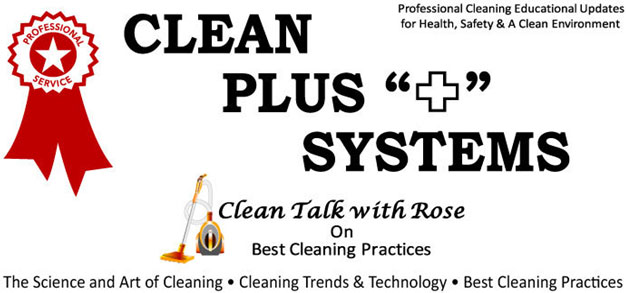“Clean first for Health & Safety before aesthetics.”
“Understand and Know that Cleaning is a Science and an Art.”
“Understand the significance of fomites in disease transmission.”
“Important to Health & Wellness is (IAQ) Indoor Air Quality.”
“If something is clean, don’t waste time to re-clean it.”
“A place for everything & everything in its place”
“Avoid climbing at all cost, use extended cleaning tools.”
“Immediate wiping up of spills will prevent spotting problems.”
“In a messy room, pick up the big mess items first.”
“Remove first the source of the odor, to eliminate the odor, disinfect then clean the surface.”
“Mold & Mildew thrive in dark, damp and airless environments.”
“Avoid climbing of step stools or ladders. Clean or dust with long handle or extension pole cleaning tools with dusting heads.”
The 1st law of Mess: ”If You don’t make the Mess, You don’t have to clean it up !”
The 2nd law of Mess: ”If You make the mess, You clean it up !”
 Foam and Suds
Foam and Suds
Foam or suds serve no useful function in the cleaning process. Foam actually impedes the cleaning process because extra rinsing is required to remove the useless additive. Foam agents are added to cleaning products to reinforce the erroneous belief that suds represents cleaning action.
Scents and Perfumes
Scents and perfumes in cleaning products do not remove odors. They merely cover them up by overloading your olfactory system, so you cannot smell the offensive odor.
Clean has No Odor
Clean has no odor except the material being cleaned. Clean does not smell like lemons, oranges, pine oil, or any other type of distilled scent or perfume. This may be one of the reasons why some hospitals do not allow scented cleaners to be used.
The Cleaning Process
The cleaning process requires the interaction between the cleaning solution, dwell time, heat and agitation. The decrease in one of these factors requires the increase in another. Agitation (scrubbing) increases molecular contact to speed the penetrating process. Cleaning solutions that eliminate the agitation factor require stronger chemicals, and these types of cleaning solutions subject the user to a higher level of toxin exposure in exchange for the convenience of eliminating the agitation or scrubbing process.
Viscosity
Viscosity or thickness has no relationship to a cleaner’s concentration. Thickening agents are added to cleaning products to make them appear concentrated. Cleaners having no thickening agents (not viscous) can penetrate dirt and soils more readily, and are much easier to rinse. Some of the most effective cleaners are just slightly more viscous than water.



